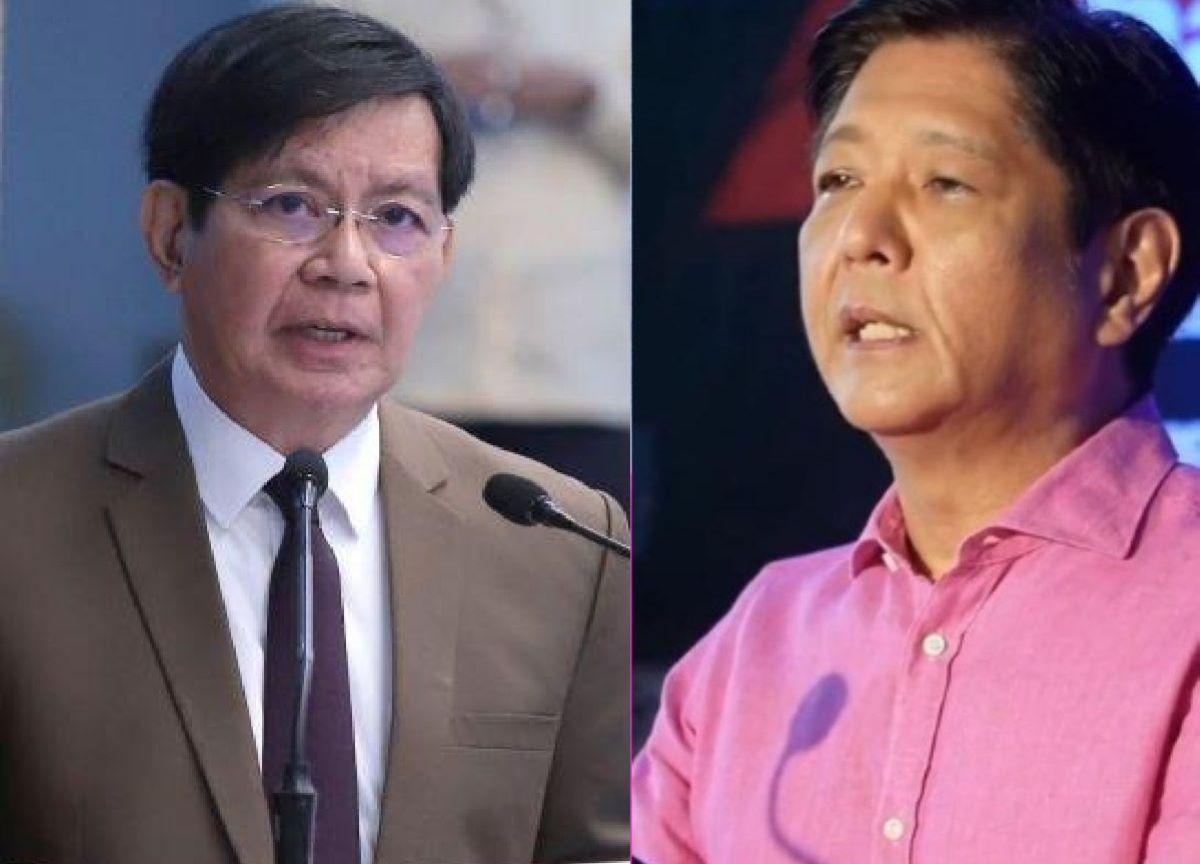A silent yet seismic political maneuver is unfolding within the halls of the Senate, threatening to fundamentally shift the direction of one of the country’s most crucial and volatile investigations—the ongoing probe into the multi-billion-peso flood control anomalies. At the heart of this unfolding drama are three colliding narratives: the surprising potential return of a controversial political figure, a radical new strategy for identifying state witnesses, and the abrupt departure of a high-ranking official caught in the crossfire. Collectively, these events suggest that the battle for the truth is no longer about gathering facts, but about controlling the narrative and protecting the system from within.
The first major tremor involves the potential political comeback of former Senator Panfilo “Ping” Lacson. Reports indicate that Senate President Tito Sotto is actively pushing for Lacson’s reinstatement as Chairman of the immensely powerful Senate Blue Ribbon Committee. This move is reportedly supported by the majority bloc, which cites Lacson’s experience and reputation as a seasoned investigator. This is instantly shrouded in intrigue, as Lacson’s previous resignation from the very same post was mired in controversy. He stepped down amidst allegations from fellow legislators that he was steering the investigation away from certain individuals, specifically those allegedly close to him in Congress—a charge he vehemently denied, but one that severely fractured his image as a defender of integrity. The question now echoing through the political corridors is clear: Is this a genuine move to bring discipline to an emotionally and politically charged investigation, or is it a calculated tactical measure by the Senate leadership to regain control, manage the testimonies, and limit the scope of the probe to prevent it from reaching the true masterminds? He who controls the investigation, it is often said, controls the truth, and the decision on who wields the Blue Ribbon Committee gavel will dictate which version of the truth the nation ultimately hears.
The second element adding shock to the situation is a brave, and arguably controversial, proposal put forth by the current Acting Senate Blue Ribbon Committee Chairman, Senator Erwin Tulfo. He has openly challenged the prevailing notion of whom the Senate should grant immunity to, arguing against extending state witness status to individuals already under investigation for the misuse of public funds, such as the implicated contractors and engineers known informally as the “BGC Boys.” Tulfo’s logic is devastatingly simple: it is morally indefensible to grant protection to those clearly implicated in stealing public funds. Instead, he proposes a radical, common-sense strategy: make legislators the state witnesses. Tulfo contends that the real weight in the scandal rests with the lawmakers themselves—those who possess the power and the direct knowledge to expose the corrupt foundations of the system, including their co-conspirators. He asserts that the investigation will only succeed if it rises above the level of mere implementers and manages to dismantle the very legislative structures that protect fraudulent contractors. This proposal immediately set the stage for a dramatic collision of principles, pitting Tulfo’s moral stance against the pragmatic approach of others, like Senate President Sotto, who suggested prioritizing contractors who showed full cooperation, such as Sally Santos of Sims Construction. The Senate’s final choice will determine whether the investigation aims to truly cleanse the house from the top down or merely settle for a superficial cleanup that protects those in power.

Compounding this crisis of confidence is the sudden, high-profile resignation of a key figure in the beleaguered Department of Public Works and Highways (DPWH). Undersecretary Aray Perez submitted an irrevocable resignation following a scathing verbal attack delivered by Batangas First District Representative Leandro Leviste during a Congressional hearing. Leviste fearlessly named Perez as a high-level appointee allegedly linked to contractors, accusing him of accepting substantial kickbacks from multi-billion-peso projects. The accusation detonated a political bomb inside the DPWH, which is already reeling from relentless questions about overpricing, ghost projects, and contractor protection schemes. DPWH Secretary Vince Dizon defended the departure, stating that Perez resigned to avoid becoming a burden to the agency’s reform efforts, calling the move a rare act of selflessness. However, critics like Congressman Leviste were quick to label the resignation a diversion tactic—a classic government move to perform a public “house cleaning” while leaving the underlying disease untouched. Leviste stressed that simply replacing individuals is useless if the systemic rot of overpricing in projects, from flood control to provincial road rehabilitation, continues to allow officials and contractors to use public funds as their personal coffers. The resignation, therefore, is not viewed as a solution, but as an alarming symptom of a much deeper, pervasive illness within the government’s infrastructure backbone.
In this ongoing political chess match, the stakes are existential. Every decision—from who chairs the committee to who is granted immunity and who is forced to resign—is scrutinized not just for its legal implications, but for its political symbolism. The investigation is now trapped in a vicious cycle: an alleged bid for control through the potential reinstallation of a controversial former chairman, a radical challenge to expose the core corruption by implicating legislators themselves, and the resignation of a high-ranking official that critics see as a strategic escape. The battle for the multi-billion-peso scandal has become a war for the credibility of the entire political system. The Filipino public must now watch and wait to see if the system has the integrity to genuinely reform itself, or if this dramatic series of events is merely a meticulously orchestrated political performance designed to protect the powerful.
News
ANG EPIC NA PAGHIHIGANTI NG ISANG TAHIMIK NA MISIS: PAANO NAGING BILYONARYA SI GINA MATAPOS SIYANG IWANAN, AT PAANONG GINAMIT ANG MARRIAGE CERTIFICATE PARA GAWING KULUNGAN ANG LOVE NEST NG KANIYANG TAKSIL NA ASAWA?!
Sa malamig na sahig ng isang inuupahang apartment sa Pasig, nakaupo si Gina Alvarez, yakap-yakap ang isang lumang bag na…
Quid Pro Quo Under Scrutiny: Citizen Filing Demands Probe Into First Lady Liza Marcos’s Ties to Special Envoy Maynard Ngu Amid Flood Control Corruption Scandal
A seismic tremor has rippled through the upper echelons of the Philippine government, casting a harsh light on the delicate…
The Torenza Deception: Unmasking the Viral Hoax That Convinced Millions a Visitor from a Non-Existent Nation Was Proof of the Multiverse
The world, as we know it, is a map—a defined, finite space governed by predictable physics and recognizable political boundaries….
MUST-WAIT FROM THE QUEEN OF SHOWBIZ SECRETS: PAANO Ibinunyag ni KRIS AQUINO ANG EXACT DATE AT SECRET ROLE BILANG UNANG INA SA ‘ROYAL WEDDING’ NI BEA ALONZO AT VINCENT CO …
Tila isang seismic event ang nangyari sa mundo ng showbiz matapos ang isang tila simpleng online greeting na nagmula sa…
Naglalako Siya ng Adobo sa Kanto—Di Nya Alam, May Ibang Pamilya ang Mister Isang Kanto Lang ang Layo. ANG LIHIM NG ADOBO NA NAGPABAGO SA LAHAT!
Sino ang mag-aakala na ang pinakamasarap na adobo sa kanto ay nagtatago ng pinakamasakit na kuwento ng pagtataksil? Kilalanin si…
Ang Nakakagimbal na Pagtataksil: Paanong ang Isang Masikap na Filipina Nurse sa Maldives ay Sinapit ang Trahedya sa Kamay ng Sarili Niyang Asawa at ng Tinuturong Kasintahan
Sa malayong isla ng Maldives, isang lugar na sinasabing paraiso, naganap ang isang nakakagimbal na kuwento ng pagtataksil, pagkawala ng…
End of content
No more pages to load












